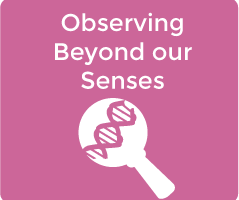In this module, students focus on the role of physics and engineering in the increasingly interdisciplinary field of systems biology. Centered on a case study requiring instrumentation for field research, the driving question is “How do scientists measure what they cannot directly observe with their senses?”
In this unit, students are confronted with increasingly complex examples to build an understanding of how scientists measure what we cannot directly observe with our senses. Trade-offs in instrumentation design and generating meaningful inferences from observations are overarching themes connecting the activities.
Environments of differing salinities form on earth. Human activities impact saline environments by altering the salinity and/or introducing pollution. Extremophilic organisms such as Halobacterium salinarum can live in high salinity environments.
his introductory activity has students quickly cycle through a complete design procedure centered on a measuring challenge. Specific aspects of a design procedure, such as defining criteria or evaluating trade-offs, will be practiced again in later instrumentation activities.
Observation is the skill of recognizing and noting some fact or occurrence in the natural world. Observation includes the act of measuring. To infer is to arrive at a decision or logical conclusion by reasoning from evidence. Scientists use observations to make inferences.
In this set of activities, students will attempt to communicate using hand signals or assemble an operational amplifier to play their iPods through a small speaker. The focus of activities will be the concepts of signal and noise and the trade-offs involved in amplifying the signal.
This lesson serves as the conceptual underpinning for understanding how light behavior can be used to measure concentrations with a spectrophotometer. Students should frame their observations around “particles” of light interacting with material in three observable ways: that light can pass through, bounce off, or be taken in by materials.
Measurements of indicator species can be used to make inferences about environmental conditions. Quantity and resolution of a data collection plan is limited by resources. Mine tailings are point sources of heavy metal pollution.
View Fullscreen Observing Beyond our Senses








